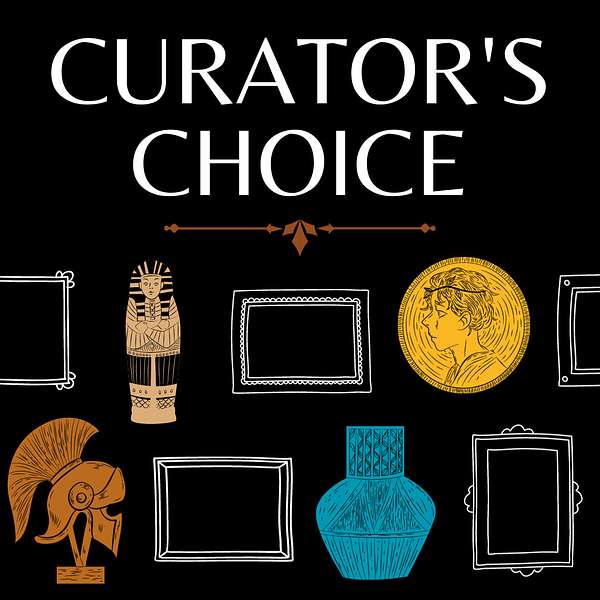
Curator's Choice
Like history? Love museums? From ancient relics to modern marvels, each episode of this show features a new museum and a sampling of some amazing artifacts housed there. What makes Curator's Choice truly special is our exclusive interviews with the unsung heroes of museums—the curators themselves. These guardians of history will share insights, anecdotes, and the often untold stories that breathe life into the artifacts they protect.
Through this podcast, our mission is to dispel the notion of museums as static, old, and dull spaces. Instead, we aim to reveal them as vibrant repositories brimming with mystery and wonder, one artifact at a time.
New episodes are released every two weeks, and you can tune in anywhere you get your podcasts!
Curator's Choice
Episode 38: Mutter Museum
This week we meet with Robert Hicks, the previous Director of the Mutter Museum in Philadelphia. The Museum contains a collection of anatomical and pathological specimens, wax models, and antique medical equipment, and is part of The College of Physicians of Philadelphia. Along with the many preserved specimens in the macabre repository, you can find the liver of conjoined twins Chang and Eng Bunker, a 40 lb colon, and anthropodermic books (or books bound in human skin).
Robert shares with us the history of some radioactive artifacts used by Marie Curie, including the Piezoelectric Quartz Electrometer, which is the oldest extant device for measuring radioactivity. We also learn about a very rare disorder called fibrodysplasia ossificans progressiva (FOP), and an incredible individual who not only lived with the disorder but thrived through adversity and even donated her skeleton to be displayed at the Mutter (along with her jewelry, of course!).
CAROL ANN ORZEL
Carol Ann Orzel, born on April 20, 1959, was diagnosed with FOP as a child. When she was 23, she moved to a long-term care facility and spent the rest of her life there. Though her muscles were slowly turning to bone, she was a strong voice in disability activism, established communication networks with other individuals suffering from FOP, and advocated for more research into the disease (of which there currently is no cure). She was also quite the social butterfly, charming many with her bright personality and colorful jewelry. Upon her death, Carol wished for her skeleton to be displayed at the Mutter Museum, alongside the skeleton of Harry Raymond Eastlack Jr, who also suffered from FOP. She did have one condition, her jewelry must also be displayed next to her.
MARIE CURIE
Marie is best known for her pioneering research on radioactivity. She was a Polish and naturalized French physicist and chemist who was the first woman to win a Nobel Prize, the only woman to win the Nobel Prize twice, and the first person to win the Nobel Prize in two scientific fields.
Episode Links:
- Mutter Museum webpage: https://muttermuseum.org/
- Carol and Harry, Fibrodysplasia Ossificans Progressiva (FOP), Mutter Museum: https://muttermuseum.org/exhibitions/harry-and-carol
- Harry Eastlack with FOP, Mutter online exhibit: http://memento.muttermuseum.org/detail/fibrodysplasia-ossificans-progressiva
- The glowing graphic novel "Radioactive: Marie & Pierre Curie, A Tale of Love and Fallout" by Lauren Redniss: http://laurenredniss.com/radioactive/
- Dog Edition Conservation Canines: https://shows.dogpodcastnetwork.com/show/dog-edition/conservation-canines-dog-edition-51/
Curator's Choice - A podcast for history nerds and museum lovers